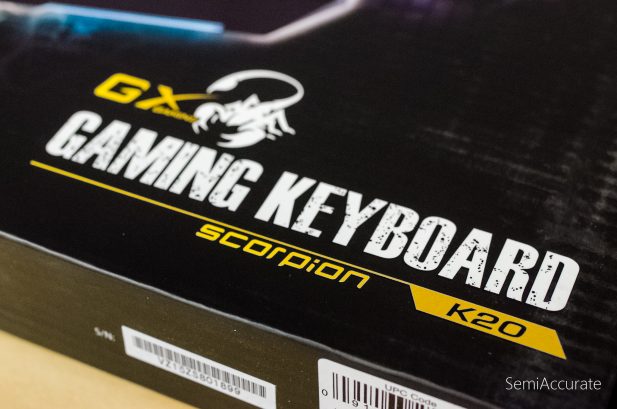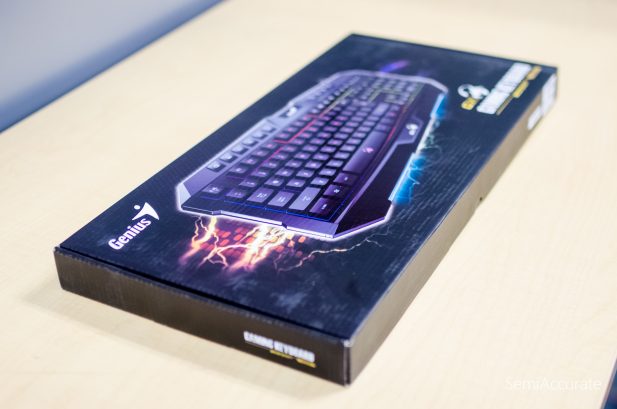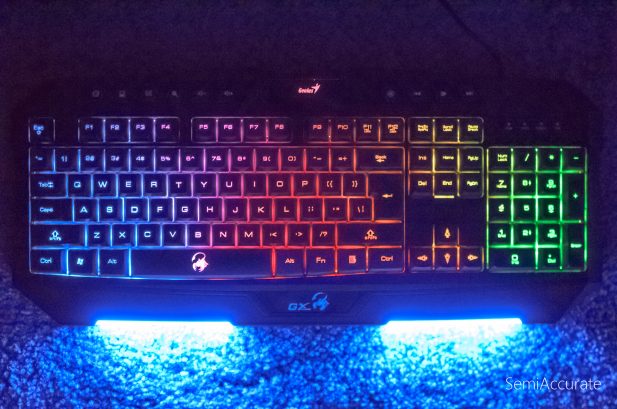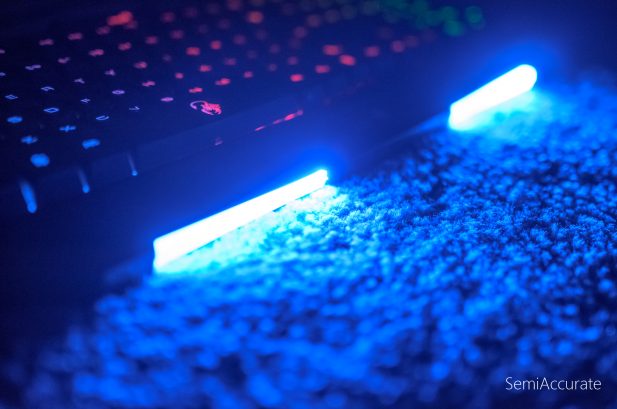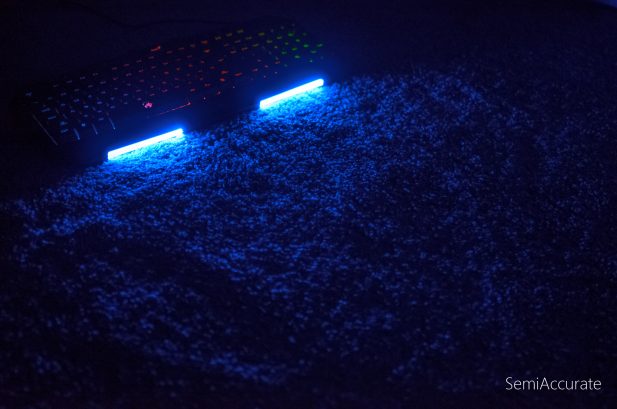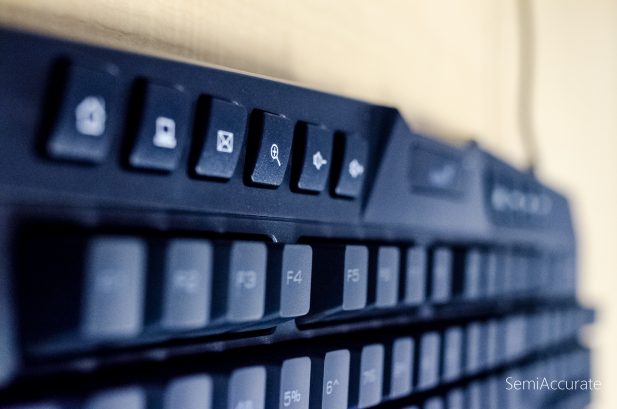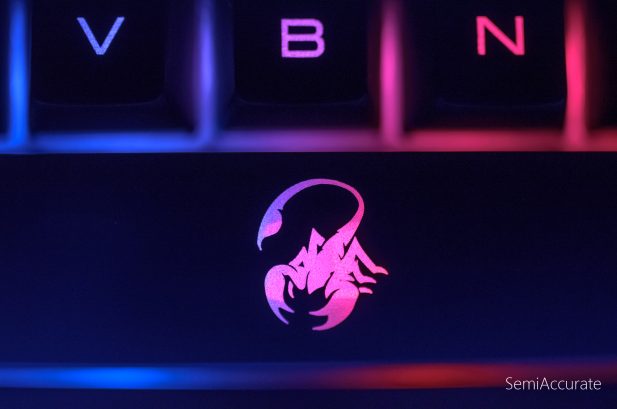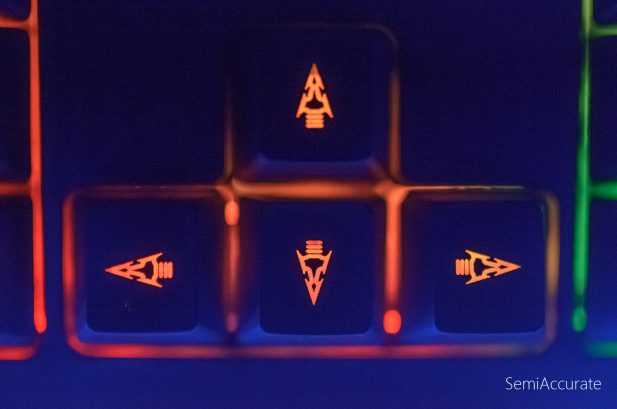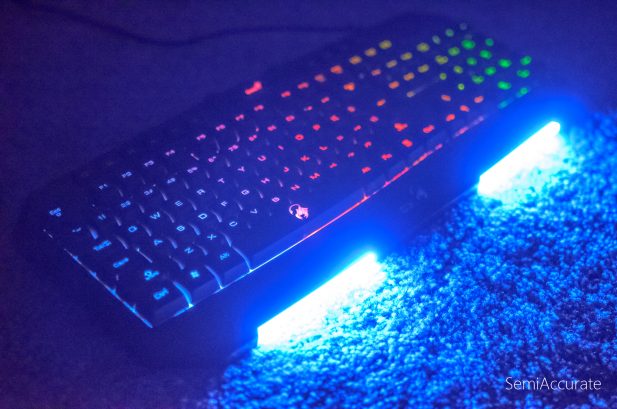Today we’re looking at the Scorpion K20 Gaming Keyboard from Genius. The big trend in PC input devices is adding colored LEDs to them. Back lit keyboards were the first step down this path and configurable multi-color keyboards were the next step. But most of the so-called RGB keyboards on the market are expensive mechanical offerings from companies like Corsair, Razer, and Cooler Master. Genius’s Scorpion K20 keyboard represents a first entry into a quickly growing category of low-cost, non-mechanical, RGB keyboards. As always, it’s great to see high-end features moving down market. But is a non-mechanical RGB keyboard any good?
Points of Comparison
Every day I spend a couple hours typing on any of three keyboards. My primary keyboard is Apple Wireless model which offers compact form factor, inclined typing surface, and decent feedback when typing. To be clear the old Apple Wireless keyboard is nothing to write home about. But it’s passable when you’re not constantly swapping out the pair of AA batteries that power it.
I also have the pleasure of spending a fair amount of time with one of Lenovo’s Thinkpad keyboards on my T420. It’s my favorite non-mechanical keyboard thanks to its large curved keys, grippy key surface, and good feedback. If I could get a homebrew case that would accept this keyboard I would happily use it on my desktop.
The only mechanical keyboard that I use is Cooler Master’s QuickFire TK which implements the Cherry MX Brown mechanical keys. It’s the best keyboard I own. The keys have great feedback, don’t require an extreme amount of force or noise to activate, and are individually lit in addition to being back-lit.
It’s from my background with these three keyboards that’ll be reviewing the Scorpion K20.
LEDs Mean Gaming
The main reason to buy the Scorpion K20 is for its sweet LEDs. Starting on the left-hand side of the keyboard there is a procession of colors that form a gradient from right to left over its surface. Individually there are blue, purple, red, orange, yellow, and green LEDs that provide the back light for the K20. The individual character markings on the keys of the K20 are translucent. But the keys are not individually back-lit so the characters pick up a slightly dimmer version of whatever color of back light is under them.
These LED are also controllable. By pressing the FN key and the Escape key you can cycle through the keyboard’s four modes. Two of these modes are different levels of brightness, one is a mode that constantly varies the brightness level, and the final mode turns off the LEDs altogether.
The strangest feature of the Scorpion K20 is the palm lighting. On the bottom edge of the keyboard, facing out towards the typist there are two hand width LED bars that shine a blue light on to the typist’s palms and chest. Unfortunately, they are much brighter and more directed at your eyes than any of the other lights on the keyboard.
You can compensate for this to a degree by using the stands on the underside to raise the top of the keyboard and angle this palm light down and away from your eyes. But even in this position I still find myself habitually moving my hands to cover these lights up when I am not typing. Palm lights are an interesting idea, but on the K20 they are at best annoying even on the lowest brightness setting, and you’ll probably be better off if you cover them with a couple strips of opaque tape.
As far as the key layout is concerned we have a completely standard layout on the K20. Which makes it easy to transition into when coming from lower quality or laptop keyboards. The K20 does incorporate an extra row of buttons above the F bar which includes volume control, opening the default web browser, email client, windows search, and file explorer. There are even media controls for play/pause and skipping forward or back through songs. Most people won’t use these special function keys, but if you want them they’re there.
Typing Performance
The key feel of the K20 is as you might expect rather numb until you hit the bottom of its travel range when you get a solid thud. On the other hand, very little force is required to press a key down. If you’ve used a membrane keyboard you know what you’re getting into. Do not expect the crispness of a mechanical keyboard.
The key caps are curved to hold your fingers in place while you complete a key stroke which is a thoughtful touch. It also means that my typing speed wasn’t significantly different on the K20 than on my other keyboards. It’s easy to rapidly and accurately bang out sentences on the K20. It’s also far quieter when your typing at full speed than a mechanical keyboard.
Compared to other membrane-based keyboards like Apple’s Wireless keyboard the K20 is on the loud end of the spectrum. I would say the noise level is comparable to any of Microsoft’s Ergonomic series of keyboards where each key stroke makes a consistently audible noise that matches up with the feeling of actuating the key. This combination of consistent feel and sound endows the user of the K20 with the confidence necessary to type quickly without fear of missed strokes.
The K20 is fine with repeating letters indefinitely when holding a key and if you want you can press up to 26 keys at the same time without issue. Input latency is minimal. There is no perceptible lag between a key press and the result of that stroke on screen. For tapping out this review, which was writing entirely using the K20, they keyboard was good enough to fade completely into the background of my mind. Which is what you want from a good keyboard, the focus should be on the control it gives you, and the content it enables you to create; not upon its idiosyncrasies or quirks as an input device.
Special Features
Long or held key stokes the K20 offers a configurable input rate. Pressing the FN key and the F1 key will set the repetition rate to 21 characters per second. F2 will take that up to 30 characters, and F3 will even further up to 62 characters per second. This is a neat, if rather niche, feature.
There are a couple of keys aesthetic choices that help set the K20 key apart from other offerings. First up is the purple scorpion that sits on the space bar. It’s a nice touch that helps lend some credibility Genius’s Scorpion brand. Additionally, the up, down, right, and left keys are not simple arrows but rather spaceships or guitars or perhaps arrow heads. It’s kind of hard to tell what they’re intended to be really, but it’s a nice change of pace.
On the underside of the K20 there are right and left kick stands with two heights to choose from. There are also little holes that isolate the light come from each of the LEDs on the K20 and give you an idea of where they’re physically located on the keyboard. It’s a small gesture but if the primary reason you’re buying the keyboard is for the LEDs then you’re bound to appreciate it.
In terms of stiffness the K20 does leave something to be desired. Pressing a key with a significant amount of force will cause the keyboard to deform. It’s stiff enough that in normal typing you’ll never enough a significant amount of flex but if you want to make it flex you can. Grabbing the keyboard at either end and twisting your hands in opposite directions also results in quite a bit of flex with minimal force but the K20 consistently returns to a flat shape even after flexing it repeatedly. Shaking the keyboard results in very little rattle and despite the flex the K20 still feels solidly built. You certainly won’t break it by throwing it across the room in a fit of rage.
The Verdict
All in all, I was presently surprised by Genius’s Scorpion K20 keyboard. It was a stronger performer than I was expecting. That said it’s still a membrane keyboard and you should understand what you’re getting into. But as membrane keyboards go it’s one of the better ones and if LEDs are what you’re after then it’s certainly got enough of them to impress your friends. The only real draw back to the K20 is the palm lights which are often a distraction. Hopefully in the next iteration of the K20, Genius will opt for a less aggressive palm lighting solution, or better yet a lighting mode where they’re disabled. For $30 Genius’s Scorpion K20 Gaming keyboard is a good value.S|A
Thomas Ryan
Latest posts by Thomas Ryan (see all)
- Intel’s Core i7-8700K: A Review - Oct 5, 2017
- Raijintek’s Thetis Window: A Case Review - Sep 28, 2017
- Intel’s Core i9-7980XE: A Review - Sep 25, 2017
- AMD’s Ryzen Pro and Ryzen Threadripper 1900X Come to Market - Aug 31, 2017
- Intel’s Core i9-7900X: A Review - Aug 24, 2017
